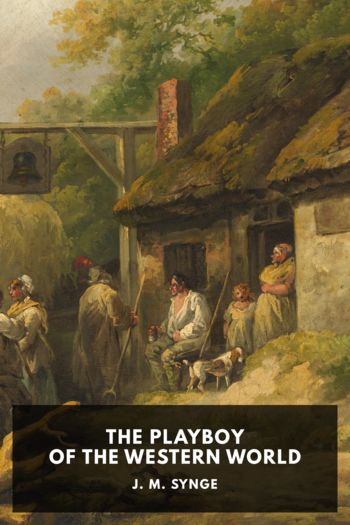Coconut Chaos by Diana Souhami (best ereader for pdf TXT) 📗

- Author: Diana Souhami
Book online «Coconut Chaos by Diana Souhami (best ereader for pdf TXT) 📗». Author Diana Souhami
I took my present home on the 23 bus.
Verity liked the top but couldn’t envisage when Rosie would wear it on Pitcairn. I said perhaps at Christmas or for church on Saturdays. Saturday became the Pitcairners’ Sabbath after they were converted to Seventh Day Adventism by American evangelists from the Napa Valley in 1876. ‘You have’, Verity said, ‘a confused idea of the journey you hope to make.’
I agreed. She boiled spaghetti and chopped broccoli and I spoke of a fractured world. I said that to go on a real journey was to face danger and surprise, and that only in the virtual worlds to which we now retreated was a false security assured. Verity looked uncomfortable. Some people who have descriptive names inform life’s narrative with them. Among the Bounty crew Robert Lamb was the butcher. In my quest for flexible flights to the southern hemisphere I was being advised by Harold Wing. That Verity’s second name was Lord, perhaps influenced her to deal in certainties. She kept a crucifix in her trinket box and found consolation for all horror in the liturgy of the Catholic Church.
I tried to be lighter. Didn’t she find it strange, I asked, the language Fletcher Christian used to William Purcell the carpenter, about his relationship with William Bligh – when he said if Bligh flogged him he’d take him in his arms and jump overboard with him. Didn’t she find that a disturbing sexual image, a fantasy of fatal bonding? It wasn’t that he’d shoot Bligh, shove him in the sea, then sail off with the ship: he’d take him in his arms, jump overboard with him and hold him until the tide overwhelmed them both. To me, I said, it sounded like a lovers’ tragedy not a mutineer’s triumph.
Verity grated the Parmesan and said she wished I’d talk about something else. I persisted. Did she not think it probable, I asked, that Bligh buggered Christian nightly and that was what the coconut business was all about: sado-masochistic sex?
I knew she was worse than irritated because the bridge of her nose had gone white. I said that a triviality was like a pinprick spy hole into chaos, that a fire might smoulder for a long time, then a chance puff of wind would make it rage, that I thought the tattoos on Christian’s arse and heart were for Bligh, that it was wrong of Bligh to call him a thief in front of the ship’s crew, that on Tahiti, when Bligh wanted to be revered by Otoo the chief, he said Christian wasn’t a friend – his friend, he said, was King George the Third.
‘Please!’ said Verity emphatically. So we talked of other things: how long the summer nights now were, and how swiftly the year had passed. Then she said she had something important to tell me and I felt a prescience, a foreboding. She said two days ago it had been her birthday and I’d forgotten this, not even given her a card. That of itself, she said, was perhaps of no great importance but it seemed indicative of how estranged we’d become.
I apologised. As recompense, I asked if she’d like to go with me the following day to the National Maritime Museum to see the Bounty artefacts on display. I suggested we go by passenger ferry down the Thames from Millbank Pier, and when we returned I’d buy her lunch in the Oxo Tower. She made an exasperated noise, a sort of whistle and click of her teeth, and said she was meeting a friend.
Later in my room, as I rewrapped Rosie’s blouse in its tissue paper, I mused on Verity’s rebuke. Perhaps it was true that I’d become so immersed in scenes from the past and plans for the future that I’d lost my connection to the present. Verity was given to citing biblical exhortations about the sufficiency of the day. I put Rosie’s blouse with my travel things and read a page of notes for my book:
Pitcairn Island is an isolated lump of craggy inhospitable rock 5 miles in diameter in the middle of the Pacific Ocean 2500 miles north-east of New Zealand at latitude 25° 0.4 mins south and longitude 30° 0.5 mins west. In 2004 it had a permanent population of 49 people, seven of whom were men charged under British law with rape and serious sexual abuse of underage girls. Other species include unnumbered rats, mice, feral cats, wild fowl, land crabs, hawks, petrels, noddy, booby and bosum birds. There are short-tailed albatrosses, cahows and dark-rumped petrels, humpback and blue whales, green sea and loggerhead turtles and bright-coloured parrot fish. There is one giant turtle called Mr, or perhaps Mrs, Turpen. Two such turtles were brought from the Galapagos Islands in 1955 but one was shot by a boy, as was a lone baby seal that tried sunning itself on the shore. The rocks round Pitcairn have not been colonised by seals.
A phone call from mother interrupted my efforts: her usual despairing lament. A phantom vandal with a key to her house had scratched the furniture and torn the lampshades. This





Comments (0)